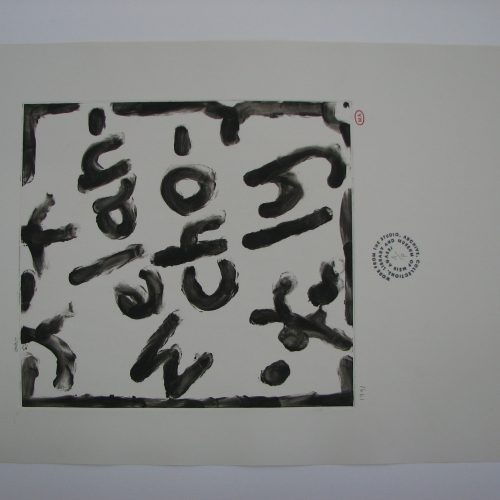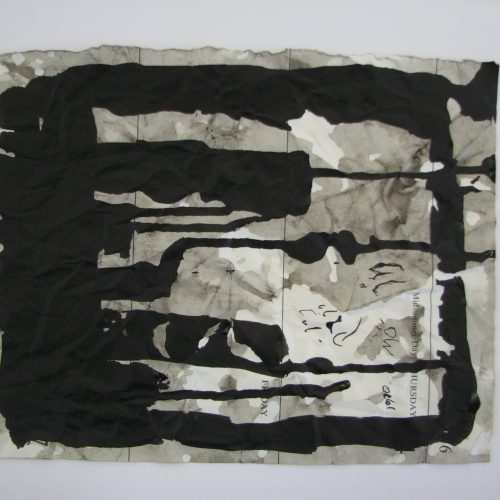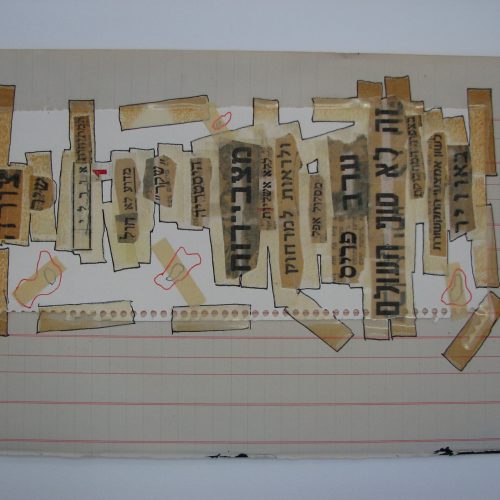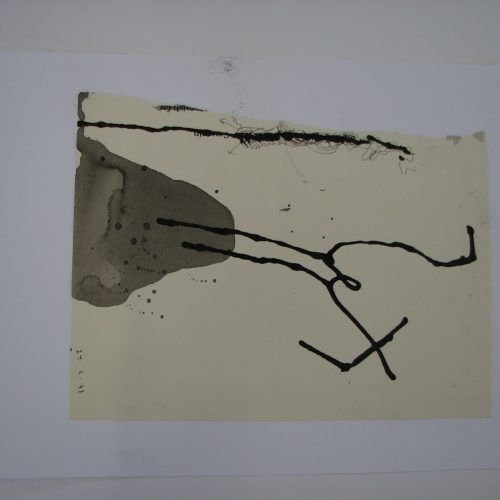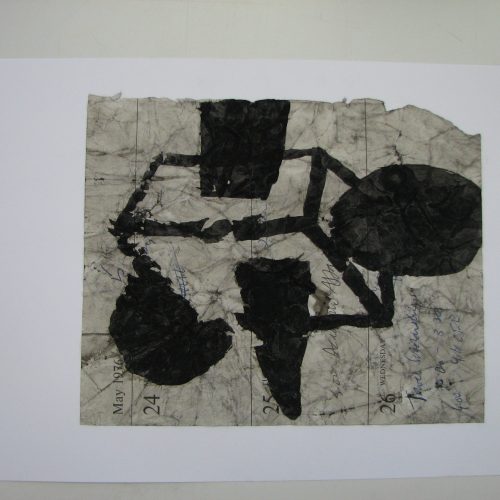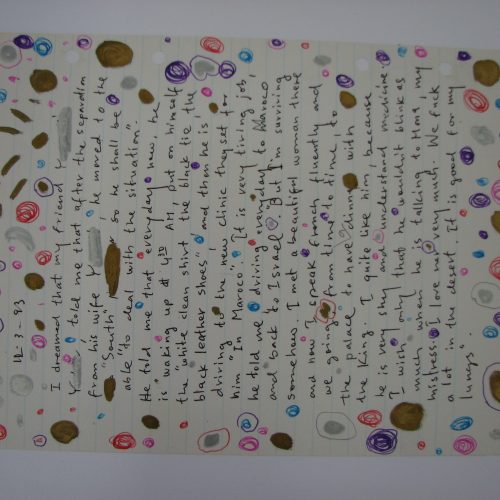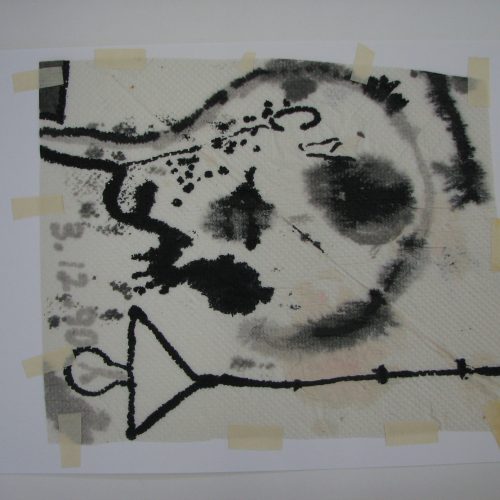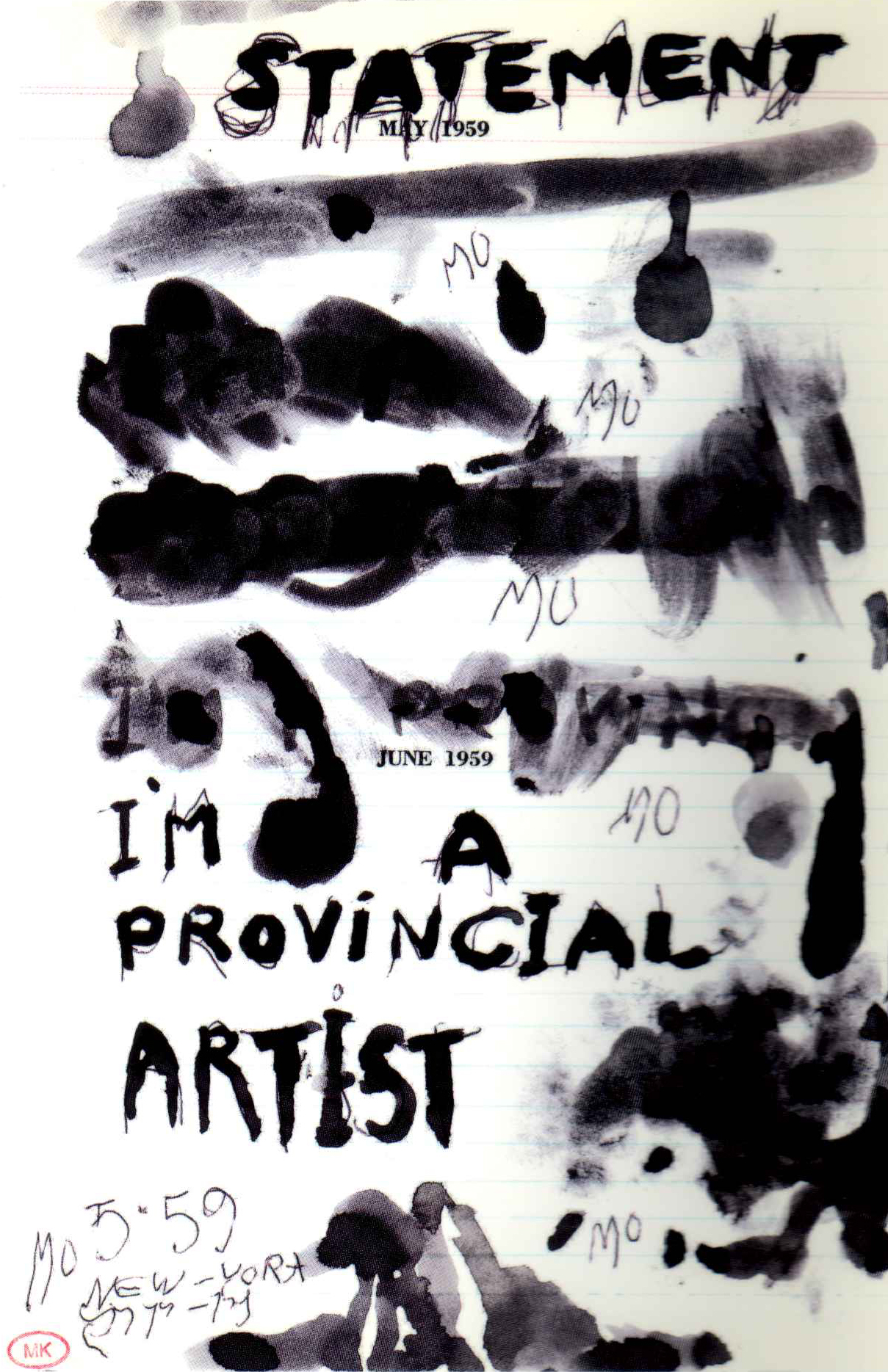
Meir Agassi – an artist, collector, author, poet and art critic – was known from his childhood on for his artistic tendencies, both in visual arts and in writing. In his youth at Kibbutz Ramat-Hakovesh he was already considered an authority on art in his kibbutz, and when he was 16 he was sent to study art at the Avni Institute in Tel Aviv (1963-1965). After completing his army service Agassi chose artistic activity as a way of life, and held his first solo exhibition, “Drawings”, at the Bar-Kochba Gallery in Tel Aviv (1970). During the following decade he held five solo exhibitions and participated in the same number of group exhibitions. In 1980 Agassi was awarded a scholarship to study art in England, and in 1982 he settled in Bristol. Concurrently he continued devoting himself to his second love – writing.
In February 1998, Agassi perished in a road accident, together with his wife Tessa and their son Daniel.
The main focus of the present exhibition is “The Meir Agassi Museum” – the final and concluding chapter of Agassi’s oeuvre which was never fully completed. The idea of the museum was not born ex nihilo; it was the consequence of passions and loves, of distresses and mental struggles that Agassi experienced. From his writings we learn that in 1989 began to practically consolidate the museum’s “form”, content, and scope. In a letter from that year he frankly describes his dilemmas, his qualms about the multiplicity of voices in his psyche and the vast diversity of his artistic inclinations. “What really disturbs me” Agassi says, is “how to bring together into a whole all the aspects of the work. How to make from all the components, fragments, waste, broken shards, patches, one thing. How […] to be able to absorb for good practical use all the influences and all the artists who are living inside me and kicking me”.
One of the insights Agassi arrived at was an acknowledgement of the multiplicity of voices jostling within him, and of his ability, as an artist, to see these as separate artists: “…maybe, at the end of the day, instead of struggling with the idea of the one-unit-cell-Artist, I should change my way of thinking altogether. Maybe, instead of seeing myself ‘officially’ as one artist, I should declare myself as many Artists, with many names (I could invent artists, give them names, biographies, myths, signatures, etc.). Why not?”
In 1992, at the height of a period of clarification and crystallization, Agassi announced the establishment of “The Meir Agassi Museum” and began presenting his works under the title (in varying sequences) “Works from the Studio, the Archive, the Collections, the Diaries and the Museum of Meir Agassi”. From that moment on, every work that he created became part of the “museum”, which also encompassed all the works he had ever created. The “Museum” became a real and inseparable part of his life routine, containing all the fields of his artistic activity, his writings, his collections, and even his library with its hundreds of volumes.
With the inception of “The Meir Agassi Museum”, a new and fascinating phase of Agassi’s work began. The museum was an answer principally for his obsessive preoccupation with the traits of his character and his personality, which from that moment on took on “new faces” by means of the three characters that he “created”. Mo Kramer, David Strauss and Susan Lipski, with their biographies and “portfolios”, became a central axis in his new artistic program, and served as mediations of Agassi’s mental states. They enabled him to develop and to give precise expression to his artistic desires, which included the turn to the domains of imagination, dreams and fantasy, the question of identity that arises from the predilection to imposture through other characters and the discussion of the craft of collecting and of Outsiders’ Art. Presenting the various characters in the framework of the “Museum” allowed Agassi to bring together his engagements with painting, drawing, photography and writing in the one sphere.
Agassi, who over the years was recognized as a writer rather than an artist, did not get to exhibit extensive and essential portions of his late work. This exhibition, which also contains chapters from his early work, seeks to open windows onto some of his worlds, and to make possible a first encounter with major portions of his artistic project.
Meir Agassi
The Meir Agassi Museum: A Real, Metaphoric, Mental Space
Curator: Yaniv Shapira
January-March 2004


